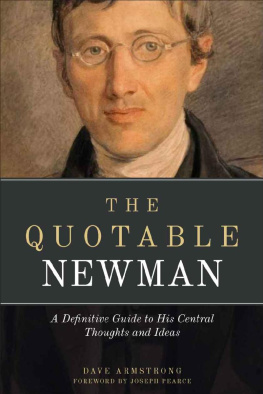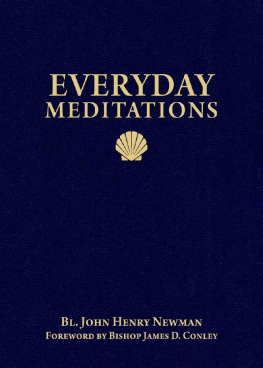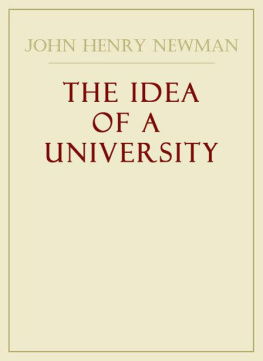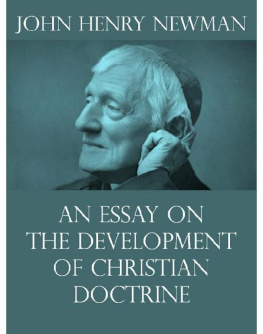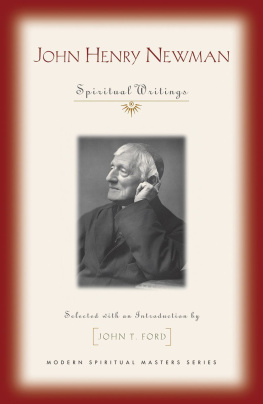John Henry Newman - Callista: A Sketch of the Third Century
Here you can read online John Henry Newman - Callista: A Sketch of the Third Century full text of the book (entire story) in english for free. Download pdf and epub, get meaning, cover and reviews about this ebook. year: 2007, publisher: Cosimo Classics, genre: Detective and thriller. Description of the work, (preface) as well as reviews are available. Best literature library LitArk.com created for fans of good reading and offers a wide selection of genres:
Romance novel
Science fiction
Adventure
Detective
Science
History
Home and family
Prose
Art
Politics
Computer
Non-fiction
Religion
Business
Children
Humor
Choose a favorite category and find really read worthwhile books. Enjoy immersion in the world of imagination, feel the emotions of the characters or learn something new for yourself, make an fascinating discovery.
- Book:Callista: A Sketch of the Third Century
- Author:
- Publisher:Cosimo Classics
- Genre:
- Year:2007
- Rating:5 / 5
- Favourites:Add to favourites
- Your mark:
- 100
- 1
- 2
- 3
- 4
- 5
Callista: A Sketch of the Third Century: summary, description and annotation
We offer to read an annotation, description, summary or preface (depends on what the author of the book "Callista: A Sketch of the Third Century" wrote himself). If you haven't found the necessary information about the book — write in the comments, we will try to find it.
Callista: A Sketch of the Third Century — read online for free the complete book (whole text) full work
Below is the text of the book, divided by pages. System saving the place of the last page read, allows you to conveniently read the book "Callista: A Sketch of the Third Century" online for free, without having to search again every time where you left off. Put a bookmark, and you can go to the page where you finished reading at any time.
Font size:
Interval:
Bookmark:
Project Gutenbergs Callista by John Henry Cardinal Newman
This eBook is for the use of anyone anywhere at no cost and with
almost no restrictions whatsoever. You may copy it, give it away or
re-use it under the terms of the Project Gutenberg License included
with this eBook or online at www.gutenberg.org
Title: Callista
Author: John Henry Cardinal Newman
Release Date: December 13, 2009 [Ebook #30664]
Last Updated: June 25, 2019
Language: English
*** START OF THE PROJECT GUTENBERG EBOOK CALLISTA ***
A TALE OF THE THIRD CENTURY
JOHN HENRY CARDINAL NEWMAN
LONGMANS, GREEN, AND CO.
39 PATERNOSTER ROW, LONDON
NEW YORK AND BOMBAY
1904
All rights reserved
To
HENRY WILLIAM WILBERFORCE.
To you alone, who have known me so long, and who love me so well, could I venture to offer a trifle like this. But you will recognise the author in his work, and take pleasure in the recognition.
J. H. N.
It is hardly necessary to say that the following Tale is a simple fiction from beginning to end. It has little in it of actual history, and not much claim to antiquarian research; yet it has required more reading than may appear at first sight.
It is an attempt to imagine and express, from a Catholic point of view, the feelings and mutual relations of Christians and heathens at the period to which it belongs, and it has been undertaken as the nearest approach which the Author could make to a more important work suggested to him from a high ecclesiastical quarter.
February 8, 1856. Since the volume has been in print, the Author finds that his name has got abroad. This gives him reason to add, that he wrote great part of Chapters I., IV., and V., and sketched the character [pg viii] and fortunes of Juba, in the early spring of 1848. He did no more till the end of last July, when he suddenly resumed the thread of his tale, and has been successful so far as this, that he has brought it to an end.
Without being able to lay his finger upon instances in point, he has some misgiving lest, from a confusion between ancient histories and modern travels, there should be inaccuracies, antiquarian or geographical, in certain of his minor statements, which carry with them authority when they cease to be anonymous.
February 2, 1881.October, 1888. In a tale such as this, which professes in the very first sentence of its Advertisement to be simple fiction from beginning to end, details may be allowably filled up by the writers imagination and coloured by his personal opinions and beliefs, the only rule binding on him being thisthat he has no right to contravene acknowledged historical facts. Thus it is that Walter Scott exercises a poets licence in drawing his Queen Elizabeth and his Claverhouse, and the author of Romola has no misgivings in even imputing hypothetical motives and intentions to Savonarola. Who, again, would quarrel with Mr. Lockhart, writing in Scotland, for excluding Pope, or Bishops, or sacrificial rites from his interesting Tale of Valerius?
Such was the understanding, as to what I might do and what I might not, with which I wrote this [pg ix] story; and to make it clearer, I added in the later editions of this Advertisement, that it was written from a Catholic point of view; while in the earlier, bearing in mind the interests of historical truth, and the anachronism which I had ventured on at page 82 in the date of Arnobius and Lactantius, I said that I had not admitted any actual interference with known facts without notice, questions of religious controversy, when I said it, not even coming into my thoughts. I did not consider my Tale to be in any sense controversial, but to be specially addressed to Catholic readers, and for their edification.
This being so, it was with no little surprise I found myself lately accused of want of truth, because I have followed great authorities in attributing to Christians of the middle of the third century what is certainly to be found in the fourth,devotions, representations, and doctrines, declaratory of the high dignity of the Blessed Virgin. If I had left out all mention of these, I should have been simply untrue to my idea and apprehension of Primitive Christianity. To what positive and certain facts do I run counter in so doing, even granting that I am indulging my imagination? But I have allowed myself no such indulgence; I gave good reasons long ago, in my Letter to Dr. Pusey (pp. 5376), for what I believe on this matter and for what I have in Callista described.
[pg x]| CHAP. | PAGE |
| I. | SICCA VENERIA |
| II. | CHRISTIANITY IN SICCA |
| III. | AGELLIUS IN HIS COTTAGE |
| IV. | JUBA |
| V. | JUCUNDUS AT SUPPER |
| VI. | GOTHS AND CHRISTIANS |
| VII. | PERSECUTION IN THE OFFING |
| VIII. | THE NEW GENERATION |
| IX. | JUCUNDUS BAITS HIS TRAP |
| X. | THE DIVINE CALLISTA |
| XI. | CALLISTAS PREACHING, AND WHAT CAME OF IT |
| XII. | A DEATH |
| XIII. | AND RESURRECTION |
| XIV. | A SMALL CLOUD |
| XV. | A VISITATION |
| XVI. | WORSE AND WORSE |
| XVII. | CHRISTIANOS AD LEONES |
| XVIII. | AGELLIUS FLITS |
| XIX. | A PASSAGE OF ARMS |
| XX. | HE SHALL NOT LOSE HIS REWARD |
| XXI. | STARTLING RUMOURS |
| XXII. | JUCUNDUS PROPOUNDS HIS VIEW OF THE SITUATION |
| XXIII. | GURTA |
| XXIV. | A MOTHERS BLESSING |
| XXV. | CALLISTA IN DURANCE |
| XXVI. | WHAT CAN IT ALL MEAN? |
| XXVII. | AM I A CHRISTIAN? |
| XXVIII. | A SICK CALL |
| XXIX. | CONVERSION |
| XXX. | TORRES VEDRAS |
| XXXI. | THE BAPTISM |
| XXXII. | THE IMPERIAL RESCRIPT |
| XXXIII. | A GOOD CONFESSION |
| XXXIV. | THE MARTYRDOM |
| XXXV. | THE CORPO SANTO |
| XXXVI. | LUX PERPETUA SANCTIS TUIS, DOMINE |
In no province of the vast Roman empire, as it existed in the middle of the third century, did Nature wear a richer or a more joyous garb than she displayed in Proconsular Africa, a territory of which Carthage was the metropolis, and Sicca might be considered the centre. The latter city, which was the seat of a Roman colony, lay upon a precipitous or steep bank, which led up along a chain of hills to a mountainous track in the direction of the north and east. In striking contrast with this wild and barren region was the view presented by the west and south, where for many miles stretched a smiling champaign, exuberantly wooded, and varied with a thousand hues, till it was terminated at length by the successive tiers of the Atlas, and the dim and fantastic forms of the Numidian mountains. The immediate neighbourhood of the city was occupied by gardens, vineyards, corn- [pg 2] fields, and meadows, crossed or encircled here by noble avenues of trees or the remains of primeval forests, there by the clustering groves which wealth and luxury had created. This spacious plain, though level when compared with the northern heights by which the city was backed, and the peaks and crags which skirted the southern and western horizon, was discovered, as light and shadow travelled with the sun, to be diversified with hill and dale, upland and hollow; while orange gardens, orchards, olive and palm plantations held their appropriate sites on the slopes or the bottoms. Through the mass of green, which extended still more thickly from the west round to the north, might be seen at intervals two solid causeways tracking their persevering course to the Mediterranean coast, the one to the ancient rival of Rome, the other to Hippo Regius in Numidia. Tourists might have complained of the absence of water from the scene; but the native peasant would have explained to them that the eye alone had reason to be discontented, and that the thick foliage and the uneven surface did but conceal what mother earth with no niggard bounty supplied. The Bagradas, issuing from the spurs of the Atlas, made up in depth what it wanted in breadth of bed, and ploughed the rich and yielding mould with its rapid stream, till, after passing Sicca in its way, it fell into the sea near Carthage. It was but the largest of a multitude of others, most of them tributaries to it, deepening as much as they increased it. While channels had been cut from the larger rills for the irrigation [pg 3] of the open land, brooks, which sprang up in the gravel which lay against the hills, had been artificially banked with cut stones or paved with pebbles; and where neither springs nor rivulets were to be found, wells had been dug, sometimes to the vast depth of as much as 200 fathoms, with such effect that the spurting column of water had in some instances drowned the zealous workmen who had been the first to reach it. And, while such were the resources of less favoured localities or seasons, profuse rains descended over the whole region for one half of the year, and the thick summer dews compensated by night for the daily tribute extorted by an African sun.
Font size:
Interval:
Bookmark:
Similar books «Callista: A Sketch of the Third Century»
Look at similar books to Callista: A Sketch of the Third Century. We have selected literature similar in name and meaning in the hope of providing readers with more options to find new, interesting, not yet read works.
Discussion, reviews of the book Callista: A Sketch of the Third Century and just readers' own opinions. Leave your comments, write what you think about the work, its meaning or the main characters. Specify what exactly you liked and what you didn't like, and why you think so.

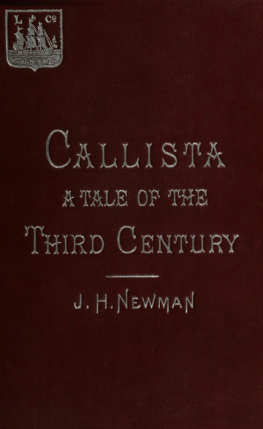


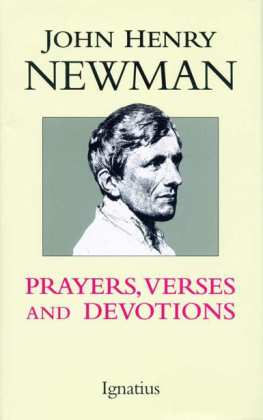

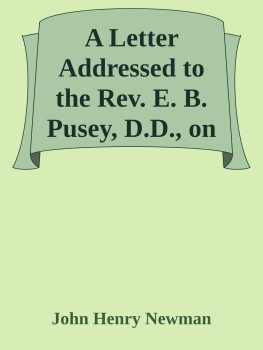
![Blessed John Henry Newman - Blessed John Henry Newman Collection [26 Books]](/uploads/posts/book/371011/thumbs/blessed-john-henry-newman-blessed-john-henry.jpg)

